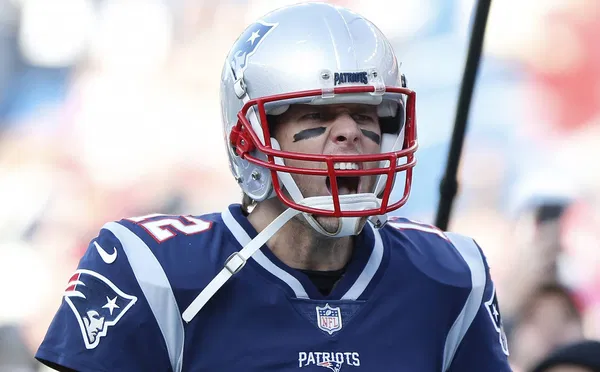
A dusty old playbook, a backup punter, and a hidden NFL formula—this may sound like the premise of a Moneyball-style sports drama, but it’s actually the strange, Jets-influenced backstory of how Tom Brady was drafted by the New England Patriots. Long before Brady cemented himself as a seven-time Super Bowl champion, the Patriots’ decision to select him in the sixth round of the 2000 NFL Draft was part of a complex chain of events set in motion by an unexpected player—punter Tom Tupa.
The Jets’ Accidental Role in Brady’s Drafting
According to sports journalist Pablo Torre, an NFL executive confirmed that the New York Jets inadvertently played a role in securing the 199th overall pick for the Patriots—the pick that landed Brady. The key to this bizarre story lies in the NFL’s compensatory draft pick system, which uses a secret formula to award teams additional draft selections based on free-agent losses.
In 1999, Bill Belichick, then an assistant coach for the Jets, brought in Tom Tupa, a versatile player he had previously coached with the Cleveland Browns. Tupa was known for his ability to serve as both a punter and an emergency quarterback. When the Jets signed Tupa to a $6 million contract, it triggered a compensatory pick for New England because the league’s hidden calculation deemed his contract valuable enough to warrant compensation for the Patriots, his previous team. That compensatory pick turned out to be the sixth-rounder used to select Brady.
Torre explained on The Rich Eisen Show that he had confirmed the details with both the NFL and an anonymous league executive. “Your New York Jets are entirely responsible for why Tom Brady even got picked by the Patriots,” Torre stated. The chain reaction was set in motion when Tupa left New England for the Jets, leading to the compensatory pick that ultimately changed the course of NFL history.
A Scout’s Effort to Draft Brady—Ignored by the Jets
Beyond the unintended role in the compensatory pick process, the Jets also had an opportunity to draft Brady themselves but passed on him. During the 2000 NFL Draft, New York had four first-round selections, one of which they used to pick quarterback Chad Pennington. However, a veteran scout within the organization was convinced that Brady was a special talent and urged general manager Bill Parcells to take him later in the draft.
This scout had closely followed Brady’s college career, including his impressive performance in the Orange Bowl, where he threw for 369 yards and four touchdowns in a dramatic 35-34 overtime victory against Alabama. Despite this, Parcells and the Jets’ front office ignored the recommendation, allowing Brady to fall to the Patriots in the sixth round. In hindsight, this decision became one of the many draft blunders the Jets would regret.
The Belichick-Brady Partnership and Inevitable Tension
After securing Brady in the draft, Belichick’s coaching and system helped transform the overlooked sixth-round pick into one of the greatest quarterbacks in NFL history. However, the relationship between Brady and Belichick wasn’t without its conflicts. By the time Brady left New England in 2020, their partnership had grown strained.
In a reflection on his departure, Brady admitted that he and Belichick had “developed tension” over time. As he entered his forties, his priorities shifted—he sought a team with strong offensive weapons and a better personal balance between football and family. The Tampa Bay Buccaneers provided that opportunity, boasting elite skill players like Mike Evans and Chris Godwin, which factored into Brady’s decision-making process.
Brady’s departure was also fueled by contract disputes. Following the 2019 season, he requested a two-year, $50 million deal, which the Patriots refused to offer. As a result, Brady entered free agency and signed with the Buccaneers for that exact amount in March 2020.
Fate, Drafting, and an Unexpected Connection
While some may credit luck for Brady’s historic rise, his journey to New England was the product of several factors, including Belichick’s scouting, a little-known backup punter, and the NFL’s compensatory pick formula. The irony of it all is that the Jets, a division rival, unknowingly played a pivotal role in delivering their greatest nemesis to New England.
Had the Jets not signed Tom Tupa in 1999, the Patriots might not have received the compensatory pick they used on Brady. Had the Jets’ front office listened to their scout’s insistence on drafting Brady, his career path—and the NFL landscape—could have looked entirely different. Instead, history unfolded in a way that left Jets fans wondering: Did they, without realizing it, create the quarterback who would dominate their franchise for two decades?
It’s a tale of missteps, missed opportunities, and the unpredictable nature of the NFL draft, proving that sometimes, even the most inconsequential decisions can alter the course of sports history.